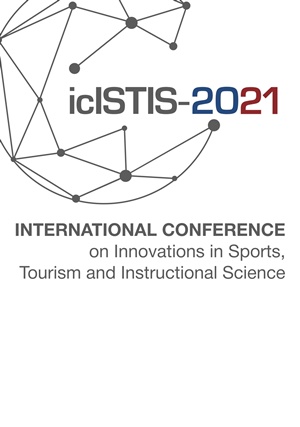ДИНАМИКА САМООЦЕНКИ ЗДОРОВЬЯ, АДДИКТИВНОГО ПОВЕДЕНИЯ И ФИЗИЧЕСКОГО РАЗВИТИЯ СТУДЕНТОВ ПЕРВОГО И ВЫПУСКНОГО КУРСОВ МЕДИЦИНСКОГО ВУЗА
Аннотация
Цель: оценить изменения психофизического профиля, студентов первого и выпускного курсов медицинского университета. Материалы и методы. Исследовали изменения психофизического профиля 53 студентов первого и выпускного курсов медицинского университета. Также испытуемые проходили психологическое тестирование: тест «Самооценка здоровья» (СОЗ по В.П. Войтенко) и тест «Диагностика аддиктивного поведения» (по Н.Н. Телеповой). Результаты. Показано, что антропометрические показатели испытуемых в период обучения увеличиваются, но частота дыхания снижается. Также снижаются и показатели двигательных качеств. За годы обучения в вузе самооценка здоровья студентов улучшается. Оценка аддиктивного поведения показала, что обследуемые студенты разделились на две группы в соотношении 2 к 1. В более многочисленной группе аддикция не прослеживалась, во второй группе наблюдались отдельные признаки аддиктивного поведения. Заключение. Таким образом, выявлены негативные изменения в физической подготовленности у студентов старших курсов. Уровень самооценки здоровья студентов выпускных курсов улучшается в сравнении с таковым у первокурсников. Показатели аддиктивного поведения были низкими и не претерпели изменений в течение срока обучения. Негативные тенденции в психофизическом профиле с возрастом будут усиливаться, что приведет к негативному влиянию на индивидуальное здоровье и профессиональную деятельность.
Литература
2. Телепова Н.Н. Диагностика аддиктивного поведения: интегрированный тест // Вестник МГПУ. Серия: Педагогика и психология. 2015. № 1 (31). С. 47–58. [Telepova N.N. [Diagnostics of Addictive behavior: an Integrated Test]. Vestnik MGPU. Ser. Pedagogika i psikhologiya [Bulletin of Moscow State Pedagogical University. Ser. Pedagogy and Psychology], 2015, no. 1 (31), pp. 47–58. (in Russ.)]
3. Тулякова О.В., Авдеева М.С. Влияние факторов перинатального анамнеза на физическое развитие первоклассников // Педиатрия. Журнал им. Г.Н. Сперанского. 2015. Т. 94, № 2. С. 199–202. [Tulyakova O.V., Avdeeva M.S. [Influence of Perinatal History Factors on the Physical Development of First-graders]. Pediatriya. Zhurnal im. G.N. Speranskogo [Pediatrics. Journal G.N. Speransky], 2015, vol. 94, no. 2, pp. 199–202. (in Russ.)]
4. Alharbi A.S. Immune Fitness and Lifestyle Habits of Saudi Medical Students: a Cross Sectional Study. Peer Journal, 2023, vol. 11, e14363. DOI: 10.7717/peerj.14363
5. Burnout: A 2021 National Survey. Mayo Clinic Proceedings, 2023, vol. 98, iss. 5, pp. 723–735
6. Atış Akyol N., Atalan Ergin D., Krettmann A.K., Essau C.A. Is the Relationship between Problematic Mobile Phone Use and Mental Health Problems Mediated by Fear of Missing Out and Escapism? Addictive Behaviors Reports, 2021, vol. 14, 100384. DOI: 10.1016/j.abrep.2021.100384
7. Briggs L.G., Riew G.J., Kim N.H. et al. Racial and Gender Differences in Medical Student. DOI: 10.1016/j.mayocp.2022.11.003
8. Dungog R.J., Tamanal J.M., Kim C.H. The Assessment of Lifestyle Status among High School and College Students in Luzon, Philippines. Journal of Lifestyle Medicine, 2021, vol. 11, iss. 2, pp. 57–65. DOI: 10.15280/jlm.2021.11.2.57
9. Han S.-J., Nagduar S., Yu H.-J. Digital Addiction and Related Factors among College Students. Healthcare (Basel, Switzerland), 2023, vol. 11, iss. 22, 2943. DOI: 10.3390/healthcare11222943
10. Herbert C. Enhancing Mental Health, Well-Being and Active Lifestyles of University Students by Means of Physical Activity and Exercise Research Programs. Frontiers in Public Health, 2022, vol. 10, 849093. DOI: 10.3389/fpubh.2022.849093
11. Jahrami H., AlKaabi J., Trabelsi K. et al. The Worldwide Prevalence of Self-reported Psychological and Behavioral Symptoms in Medical Students: An Umbrella Review and Meta-analysis of Meta-analyses. Journal of Psychosomatic Research, 2023, vol. 173, 111479. DOI: 10.1016/j.jpsychores. 2023.111479
12. Merrill J.E., Fan P., Wray T.B., Miranda Jr R. Assessment of Alcohol Use and Conse-quences: Comparison of Data Collected Via Timeline Followback Interview and Daily Reports. Journal of Studies on Alcohol and Drugs, 2020, vol. 81, iss. 2, pp. 212–219. DOI: 10.15288/jsad.2020.81.212
13. Müller C., El-Ansari K., El Ansari W. Health-Promoting Behavior and Lifestyle Characteristics of Students as a Function of Sex and Academic Level. International Journal of Environmental Research and Public Health, 2022, vol. 19, iss. 12, 7539. DOI: 10.3390/ijerph19127539
14. Parmar J.S., Samundy K. Prevalence of Internet Addiction and its Impact on Selected Psychological Parameters Among UG Nursing Students. Journal of Education and Health Promotion, 2022, vol. 11, iss. 1, p. 407. DOI: 10.4103/jehp.jehp_610_22
15. Rodríguez-Romo G., Acebes-Sánchez J., García-Merino S. et al. Physical Activity and Mental Health in Undergraduate Students. International Journal of Environmental Research and Public Health, 2022, vol. 20, iss. 1, p. 195. DOI: 10.3390/ijerph20010195
16. Rosales-Ricardo Y., Ferreira J.P. Effects of Physical Exercise on Burnout Syndrome in University Students. MEDICC Review, 2022, vol. 24, iss. 1, pp. 36–39. DOI: 10.37757/MR2022.V24.N1.7
17. Safarini O.A., Taya H., Abu Elhija Y. et al. Assessment of the Relationship of Depression with Tobacco and Caffeine Use Among University Students: A Cross-Sectional Study. Cureus, 2021, vol. 13, iss. 10, e19098. DOI: 10.7759/cureus.19098
18. Salgado García F., Bursac Z., Derefinko K.J. Cumulative Risk of Substance Use in Com-munity College Students. The American Journal on Addictions, 2020, vol. 29, iss. 2, pp. 97–104. DOI: 10.1111/ajad.12983
19. Song J., Liu Z.Z., Huang J. et al. Effects of Aerobic Exercise, Traditional Chinese Exercises, and Meditation on Depressive Symptoms of College Student: A Meta-analysis of Randomized Controlled Trials. Medicine, 2021, vol. 100, iss. 1, e23819. DOI: 10.1097/MD.0000000000023819
20. Taylor C.E., Scott E.J., Owen K. Physical Activity, Burnout and Quality of Life in Medical Students: A Systematic Review. The Clinical Teacher, 2022, vol. 19, iss. 6, e13525. DOI: 10.1111/tct.13525
21. Wunsch K., Fiedler J., Bachert P., Woll A. The Tridirectional Relationship among Physical Activity, Stress, and Academic Performance in University Students: A Systematic Review and Meta-Analysis. International Journal of Environmental Research and Public Health, 2021, vol. 18, iss. 2, p. 739. DOI: 10.3390/ijerph18020739
22. Yang Z., Yang Z., Ou W. et al. Effects of Physical Activity Interventions on Physical Self-Perception in College Students: A Systematic Review and Meta-Analysis. Journal of Physical Activity & Health, 2024, vol. 21, iss. 10, pp. 990–1007. DOI: 10.1123/jpah.2024-0055
23. Zhu S., Liu N., Zhang W. et al. The Relationship between Loneliness and Psychological Distress among Chinese College Students: the Mediating Role of Mobile Phone Addiction and the Moderating Role of Core Self-evaluation. Psychology, Health & Medicine, 2025, vol. 30, iss. 1, pp. 148–164. DOI: 10.1080/13548506.2024.2418438
References
1. Маркина Л.Д. Определение биологического возраста человека методом В.П. Войтенко. Владивосток: ВГМУ, 2001. 29 с. [Markina L.D. Opredeleniye biologicheskogo vozrasta cheloveka metodom Voitenko V.P. [Determination of Human Biological Age by the Method of Voitenko V.P.]. Vladivostok, VSMU Publ., 2001. 29 p.]2. Телепова Н.Н. Диагностика аддиктивного поведения: интегрированный тест // Вестник МГПУ. Серия: Педагогика и психология. 2015. № 1 (31). С. 47–58. [Telepova N.N. [Diagnostics of Addictive behavior: an Integrated Test]. Vestnik MGPU. Ser. Pedagogika i psikhologiya [Bulletin of Moscow State Pedagogical University. Ser. Pedagogy and Psychology], 2015, no. 1 (31), pp. 47–58. (in Russ.)]
3. Тулякова О.В., Авдеева М.С. Влияние факторов перинатального анамнеза на физическое развитие первоклассников // Педиатрия. Журнал им. Г.Н. Сперанского. 2015. Т. 94, № 2. С. 199–202. [Tulyakova O.V., Avdeeva M.S. [Influence of Perinatal History Factors on the Physical Development of First-graders]. Pediatriya. Zhurnal im. G.N. Speranskogo [Pediatrics. Journal G.N. Speransky], 2015, vol. 94, no. 2, pp. 199–202. (in Russ.)]
4. Alharbi A.S. Immune Fitness and Lifestyle Habits of Saudi Medical Students: a Cross Sectional Study. Peer Journal, 2023, vol. 11, e14363. DOI: 10.7717/peerj.14363
5. Burnout: A 2021 National Survey. Mayo Clinic Proceedings, 2023, vol. 98, iss. 5, pp. 723–735
6. Atış Akyol N., Atalan Ergin D., Krettmann A.K., Essau C.A. Is the Relationship between Problematic Mobile Phone Use and Mental Health Problems Mediated by Fear of Missing Out and Escapism? Addictive Behaviors Reports, 2021, vol. 14, 100384. DOI: 10.1016/j.abrep.2021.100384
7. Briggs L.G., Riew G.J., Kim N.H. et al. Racial and Gender Differences in Medical Student. DOI: 10.1016/j.mayocp.2022.11.003
8. Dungog R.J., Tamanal J.M., Kim C.H. The Assessment of Lifestyle Status among High School and College Students in Luzon, Philippines. Journal of Lifestyle Medicine, 2021, vol. 11, iss. 2, pp. 57–65. DOI: 10.15280/jlm.2021.11.2.57
9. Han S.-J., Nagduar S., Yu H.-J. Digital Addiction and Related Factors among College Students. Healthcare (Basel, Switzerland), 2023, vol. 11, iss. 22, 2943. DOI: 10.3390/healthcare11222943
10. Herbert C. Enhancing Mental Health, Well-Being and Active Lifestyles of University Students by Means of Physical Activity and Exercise Research Programs. Frontiers in Public Health, 2022, vol. 10, 849093. DOI: 10.3389/fpubh.2022.849093
11. Jahrami H., AlKaabi J., Trabelsi K. et al. The Worldwide Prevalence of Self-reported Psychological and Behavioral Symptoms in Medical Students: An Umbrella Review and Meta-analysis of Meta-analyses. Journal of Psychosomatic Research, 2023, vol. 173, 111479. DOI: 10.1016/j.jpsychores. 2023.111479
12. Merrill J.E., Fan P., Wray T.B., Miranda Jr R. Assessment of Alcohol Use and Conse-quences: Comparison of Data Collected Via Timeline Followback Interview and Daily Reports. Journal of Studies on Alcohol and Drugs, 2020, vol. 81, iss. 2, pp. 212–219. DOI: 10.15288/jsad.2020.81.212
13. Müller C., El-Ansari K., El Ansari W. Health-Promoting Behavior and Lifestyle Characteristics of Students as a Function of Sex and Academic Level. International Journal of Environmental Research and Public Health, 2022, vol. 19, iss. 12, 7539. DOI: 10.3390/ijerph19127539
14. Parmar J.S., Samundy K. Prevalence of Internet Addiction and its Impact on Selected Psychological Parameters Among UG Nursing Students. Journal of Education and Health Promotion, 2022, vol. 11, iss. 1, p. 407. DOI: 10.4103/jehp.jehp_610_22
15. Rodríguez-Romo G., Acebes-Sánchez J., García-Merino S. et al. Physical Activity and Mental Health in Undergraduate Students. International Journal of Environmental Research and Public Health, 2022, vol. 20, iss. 1, p. 195. DOI: 10.3390/ijerph20010195
16. Rosales-Ricardo Y., Ferreira J.P. Effects of Physical Exercise on Burnout Syndrome in University Students. MEDICC Review, 2022, vol. 24, iss. 1, pp. 36–39. DOI: 10.37757/MR2022.V24.N1.7
17. Safarini O.A., Taya H., Abu Elhija Y. et al. Assessment of the Relationship of Depression with Tobacco and Caffeine Use Among University Students: A Cross-Sectional Study. Cureus, 2021, vol. 13, iss. 10, e19098. DOI: 10.7759/cureus.19098
18. Salgado García F., Bursac Z., Derefinko K.J. Cumulative Risk of Substance Use in Community College Students. The American Journal on Addictions, 2020, vol. 29, iss. 2, pp. 97–104. DOI: 10.1111/ajad.12983
19. Song J., Liu Z.Z., Huang J. et al. Effects of Aerobic Exercise, Traditional Chinese Exercises, and Meditation on Depressive Symptoms of College Student: A Meta-analysis of Randomized Controlled Trials. Medicine, 2021, vol. 100, iss. 1, e23819. DOI: 10.1097/MD.0000000000023819
20. Taylor C.E., Scott E.J., Owen K. Physical Activity, Burnout and Quality of Life in Medical Students: A Systematic Review. The Clinical Teacher, 2022, vol. 19, iss. 6, e13525. DOI: 10.1111/tct.13525
21. Wunsch K., Fiedler J., Bachert P., Woll A. The Tridirectional Relationship among Physical Activity, Stress, and Academic Performance in University Students: A Systematic Review and Meta-Analysis. International Journal of Environmental Research and Public Health, 2021, vol. 18, iss. 2, p. 739. DOI: 10.3390/ijerph18020739
22. Yang Z., Yang Z., Ou W. et al. Effects of Physical Activity Interventions on Physical Self-Perception in College Students: A Systematic Review and Meta-Analysis. Journal of Physical Activity & Health, 2024, vol. 21, iss. 10, pp. 990–1007. DOI: 10.1123/jpah.2024-0055
23. Zhu S., Liu N., Zhang W. et al. The Relationship between Loneliness and Psychological Distress among Chinese College Students: the Mediating Role of Mobile Phone Addiction and the Moderating Role of Core Self-evaluation. Psychology, Health & Medicine, 2025, vol. 30, iss. 1, pp. 148–164. DOI: 10.1080/13548506.2024.2418438
Copyright (c) 2025 Человек. Спорт. Медицина

Это произведение доступно по лицензии Creative Commons «Attribution-NonCommercial-NoDerivatives» («Атрибуция — Некоммерческое использование — Без производных произведений») 4.0 Всемирная.















